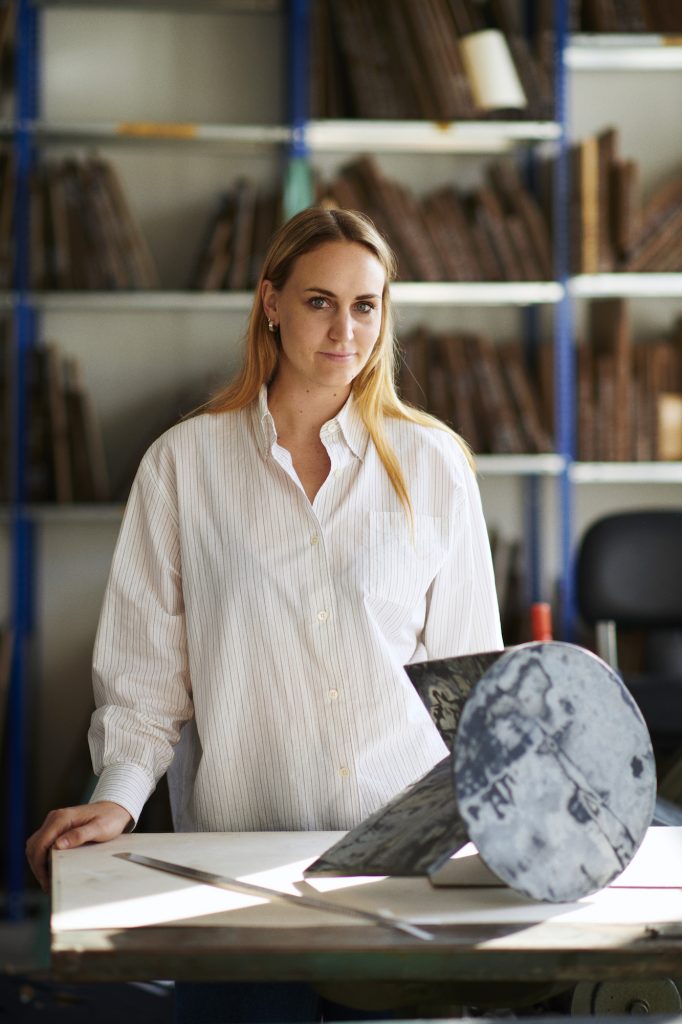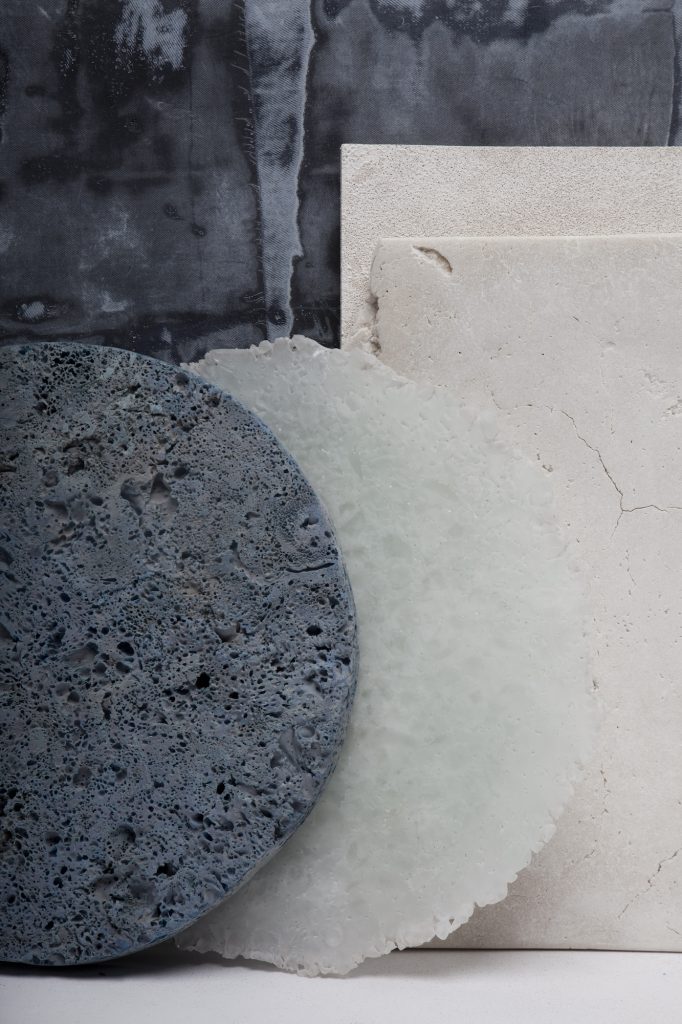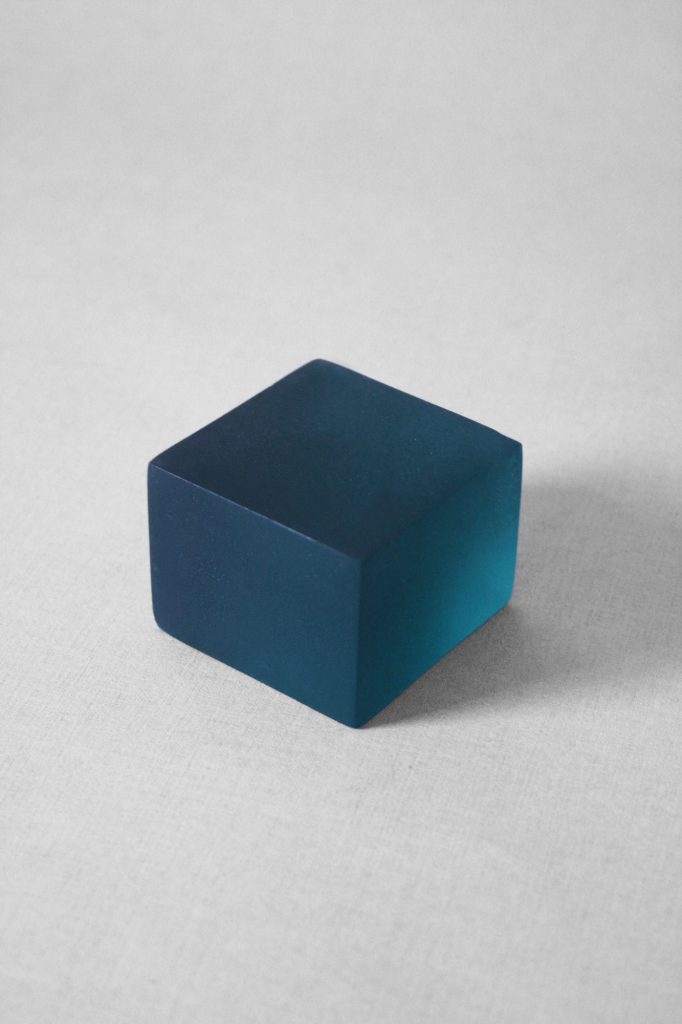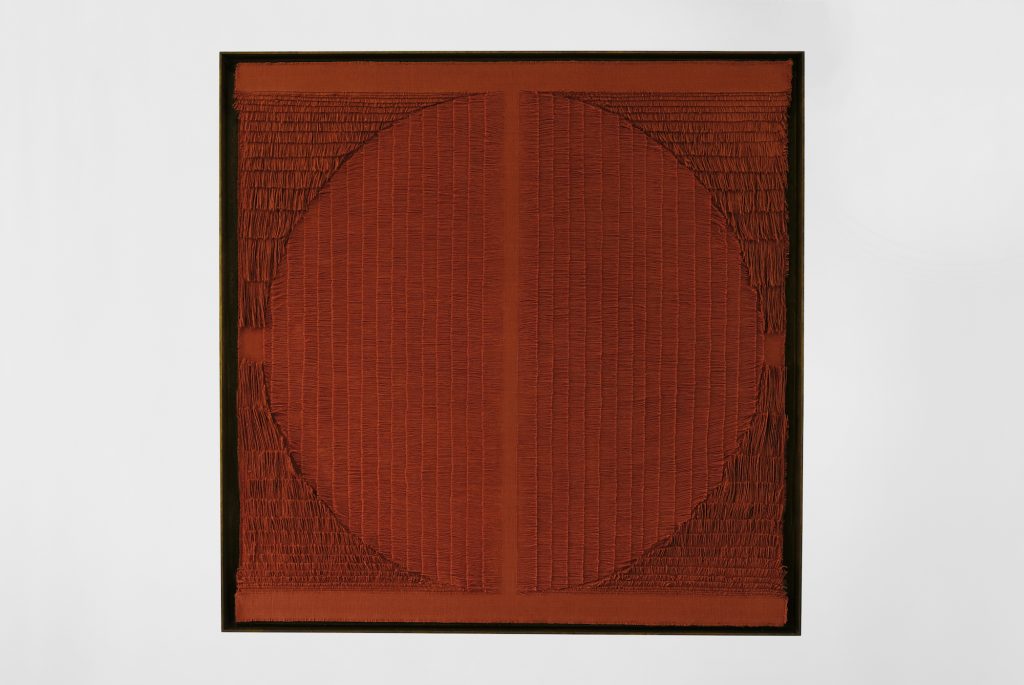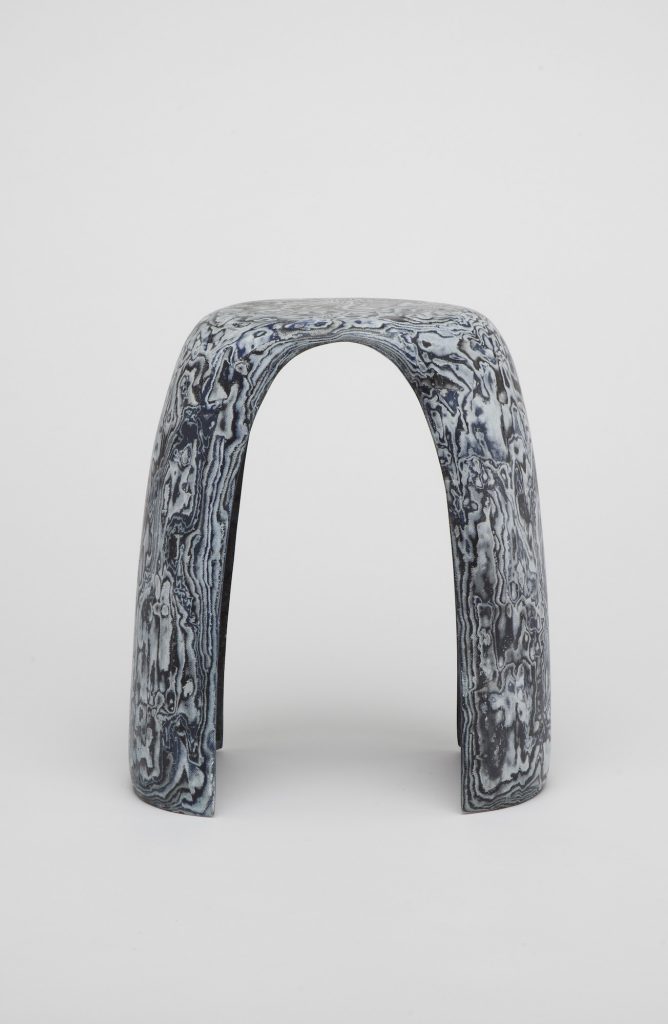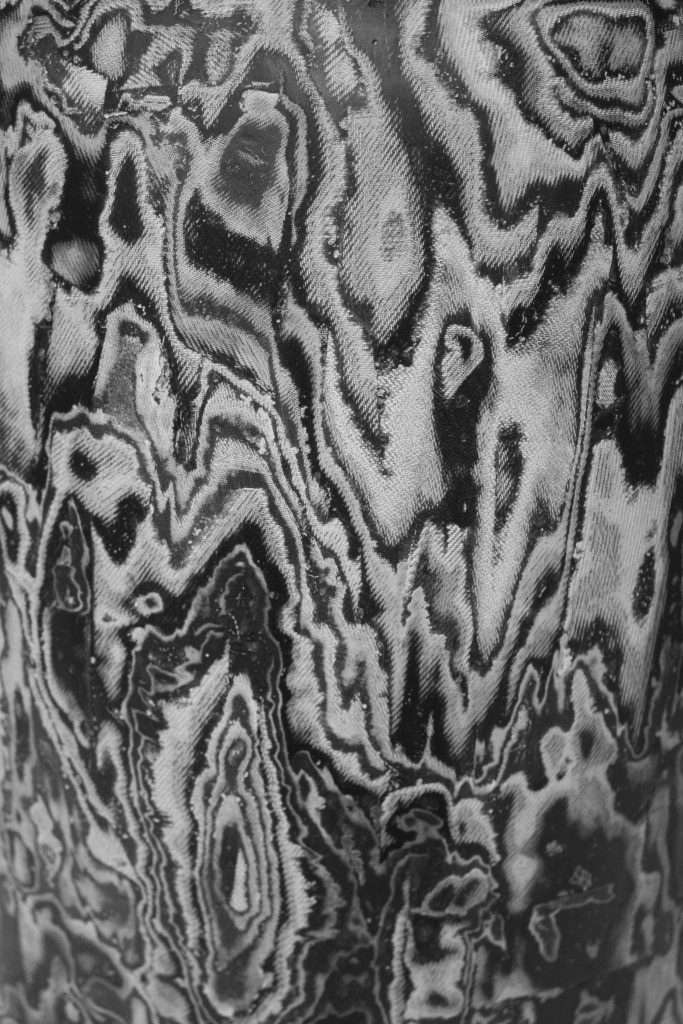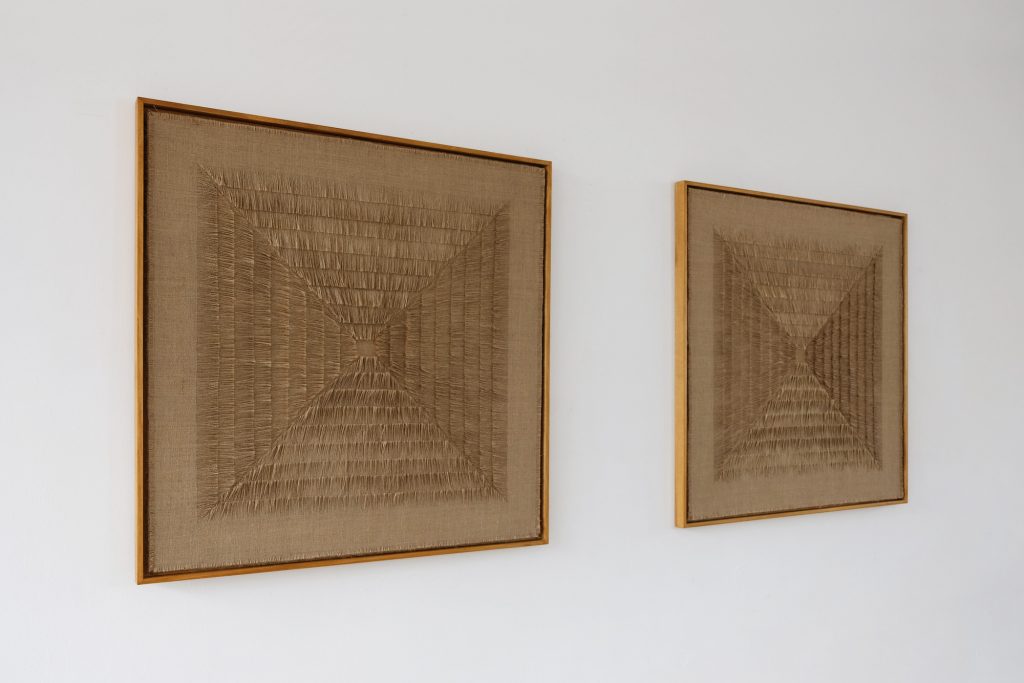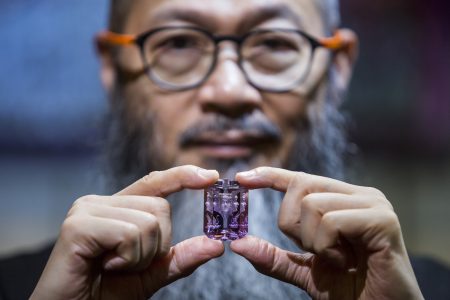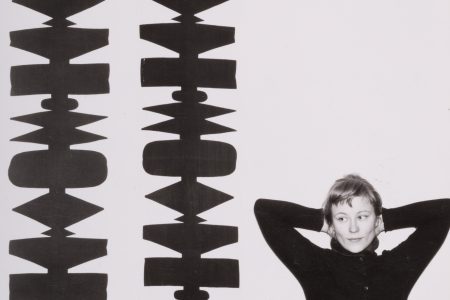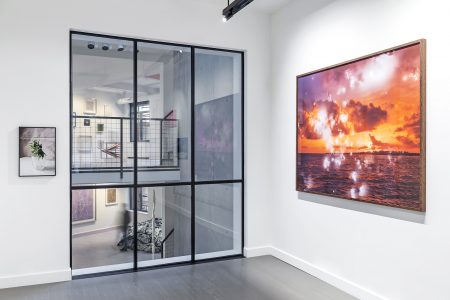Sophie Rowley – Rags to Riches
At the confluence of textile design and neo-materialism, designer Sophie Rowley fashions limited-edition furnishings out of upcycled denim, but it might seem that her chosen medium is marble.
The New Zealand-born, Berlin-based talent’s almost alchemic approach stems from an experimental and process-driven practice she developed during her studies in the Central Saint Martin’s MA Material Futures program. Projects like Material Illusions reveal her ability to transform discarded matter into new composites that simulate noble materials. Through the implementation of discernible furniture archetypes and visual techniques like trompe l’oeil, Rowley creates works that are both functional and conceptual statement pieces, riffing on the common perception of material value.
“I like playing with illusion,” the designer explains. “My designs should facilitate a point of encounter for the viewer to draw their own conclusions. They are conversation starters.” This approach first manifested in the State of Matter project developed for David Chipperfield Architects: a series of textural panels intended to emulate the different natural states of water, from its solid form as ice to its gaseous condition. Though Rowley’s primary interest is in creating unexpected materials and not necessarily sustainable processes, her desire to work with inexpensive materials and, in particular, fabric pushed her in that direction.
Rowley first trained as a fashion and textile designer and spent much of her early career in the fashion industry developing materials for major brands including Alexander McQueen and Diane Von Furstenberg, but didn’t stick around too long. “I left because it was too repetitive and quick,” she reveals. “I didn’t want to stay in an industry that produces so much waste.”
Deciding to study in Central Saint Martin’s MA Material Futures program afforded her a chance to continue working with the medium but in a new way. The course also pushed her to explore new materials and techniques that would begin to inform her experimental approach. Mixing and matching established practices and the inherent thought processes associated with well-worn techniques allowed her to create her first independent projects. By returning to textiles time and time again, Rowley has been able to reflect on and even critique the industry she was once part of.
“I feel very comfortable with fabric because of the experience I have working with it,” she explains. “I can tell it what to do.” Having specialized in this particular medium and gained an implicit understanding of its properties and processes, Rowley can safely push beyond traditional boundaries. Initially developed as part of her thesis project, Material Illusions is a series of composites and furnishings composed of resin-bound, post-consumer denim scraps Rowley sourced throughout the London area. The layering process she employed resembles the natural occurrence of sediment formation and erosion. For her, nature and its various patterns remains a measure of quality, an intrinsic aesthetic that everyone can understand in some form or other.
“What has always been the driving force behind my work is the idea of taking something simple or common and transforming it into something valuable,” Rowley describes. “Part of giving waste material the same worth as marble is working the composite until it’s very refined, spending a lot of time crafting it so that in the end, it’s not necessarily important what your source material was but what it’s become.”
Khadi Frays, the designer’s latest endeavour, is a series of geometric tapestries created using a reductive versus adaptive handweaving technique. Rowley first developed the collection during an extended stay in India, where she came across various age-old textile crafts. Though the works don’t employ or directly reference any of these traditions, they evoke the idea of time and illimitable patience she encountered in this context. By pulling threads away from a woven textile, she can create various layered, geometric patterns.
“It is organized destruction, taking something apart and putting it back together neatly,” She explains. “This is similar to what I do with waste material. I dismantle it and put it back together in a different way that improves its value.” With Khadi Frays, Rowley was a 2019 Loewe Craft Prize finalist. She plans to continue iterating on this design and creating new variations.
This article was originally published in the A/W 2020 issue of TLmag34: Precious: A Geology of Being.
sophierowley.com
@sophie.rowley
